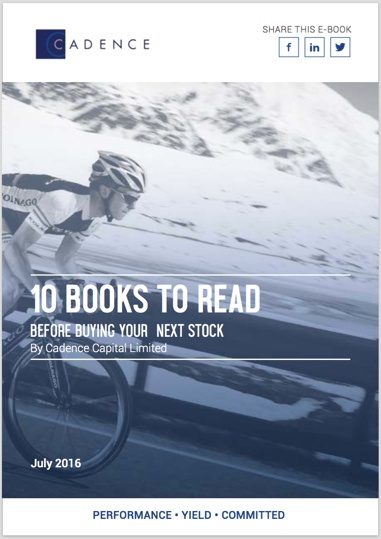This article was written by Karl Siegling and originally published in 'Morningstar'.
5 traps in using the dividend yield
Following our last article, 5 traps in using the PE metric, we are writing on possibly the second most misused ratio within the equities investment community — the dividend yield.
Dividend yield is calculated by dividing the dividends paid by a company in one financial year by the market capitalisation of that company, for example, a $10-million dividend divided by a $200 million market capitalisation company equals a 5 per cent yield per annum.
To the extent the company has paid tax before paying the dividend out, the dividend will often be “fully franked,” which means tax has been paid on that dividend at a 30 per cent tax rate.
More recently, the investment community has become fixated on dividend yield, and in particular, the self-managed superannuation fund (SMSF) investor. There are many reasons for this.
SMSF retirees use these dividends to live on and the higher they are, in principle, the higher their standard of living.
SMSF investors actually pay much lower than 30 per cent tax so that the excess amount of tax paid is, in effect, “refunded” to SMSF investors.
Interest rates globally have been falling steadily and are now at historically low levels so that fully franked dividend yields look significantly more attractive than interest on cash in the bank or term deposits.
The risk with fixations, fads and trends in the market is that they can eventually lead to abnormal behaviour. The desire to provide a strong fully franked yield or strong perceived yield can result in less-than-ideal business practices.
The first less-than-ideal business practice is taking excessive risk to deliver greater dividend yield, by significantly ramping up the level of debt within a business.
As company structures increase debt, an inevitable tipping point emerges at which too much risk has been taken to deliver yield and the underlying share price, assets or capital of the company, collapse.
We witnessed this phenomenon in great detail in the GFC with the collapse of real estate investment trusts (REITs), infrastructure trusts and many other financially engineered companies with excessive debt.
As the hunt for dividend yield heats up again, the risks of a repeat collapse in underlying capital can occur.
The risk with dividends is paying out non-cash earnings. This was another common practice before the GFC. A property trust would, for example, revalue a series of buildings as non-cash profits, raise money in the capital markets via a capital raising and then pay those funds out as dividends.
The property trusts engaging in this activity would present as having high and, to the uninitiated, sustainable dividend yields.
Again, this practice continued until there was a massive property market correction. Unrealised gains previously booked as non-cash earnings would have to be reversed and the property trust went from “high, sustainable yield” to no yield, with a massive hit to the asset value of the company’s balance sheet.
The most extreme example involved companies paying dividends on unrealised gains while also having excessive levels of debt.
Another common phenomenon with dividend yields is the “special dividend”. From time to time, companies pay out special dividends when they have had an extraordinarily good period of profitability. These dividends fall outside the scope of the “normal” half-year or full-year result.
The market has a tendency to take “normal” and “extraordinary” dividends, combine them and impute these dividends into the future. This tendency is wrong since the “special” dividend is just that — and won’t necessarily be declared again in the future.
Another tendency of the market is to impute dividend yield for a particular company into the future, or indefinitely. While this idea is appealing it is equivalent to saying a company’s profitability will continue to grow indefinitely.
This again is not the case for almost all listed equities. We need only look at yesterday’s “blue chips” Kodak, Sony, Gowings and WC Penfolds to realise that profitability, and hence underlying dividend yield, changes over time.
One final check that we tend to employ as a rule of thumb is to look at the cash-flow statements released annually by a company and to determine how much free cash flow a company has produced in the year just gone.
The key question is whether or not the free cash flow is greater than the dividends declared. A dividend paid out that is greater than free cash flow is essentially unsustainable over time and runs the risk of future disappointment.
There can be timing differences between when free cash flow is earned and when it is paid out, but ultimately a company cannot pay out more than it is earning. The only way this is possible is by increasing debt or raising additional funds from the market.
The equivalent at an individual level is living beyond your means and borrowing money on credit cards to fund your lifestyle, or borrowing against your assets to fund your lifestyle.
As we all know, these practices are ultimately unsustainable … although some would argue you can have a lot of fun along the way. We try and have fun identifying those companies employing these practices!

